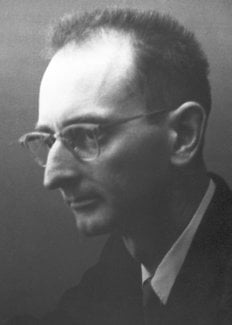Owen Chamberlain
Biographical

Owen Chamberlain was born in San Francisco on July 10, 1920. His father was W. Edward Chamberlain, a prominent radiologist with an interest in physics. His mother’s maiden name was Genevieve Lucinda Owen.
He obtained his bachelor’s degree at Dartmouth College in 1941. He entered graduate school in physics at the University of California, but his studies were interrupted by the involvement of the United States in World War II. In early 1942 he joined the Manhattan Project, the U.S. Government organization for the construction of the atomic bomb. Within the Manhattan Project he worked under Professor Emilio Segrè, both in Berkeley, California, and in Los Alamos, New Mexico, investigating nuclear cross sections for intermediate-energy neutrons and the spontaneous fission of heavy elements. In 1946 he resumed graduate work at the University of Chicago where, under the inspired guidance of the late Professor Enrico Fermi, he worked toward his doctorate. He completed experimental work on the diffraction of slow neutrons in liquids in 1948 and his doctor’s degree was awarded in 1949 by the University of Chicago.
In 1948 he accepted a teaching position at the University of California in Berkeley. His research work includes extensive studies of proton-proton scattering, undertaken with Professor Segrè and Dr. Clyde Wiegand, and an important series of experiments on polarization effects in proton scattering, culminating in the triple-scattering experiments with Professor Segrè, Dr. Wiegand, Dr. Thomas Ypsilantis, and Dr. Robert D. Tripp. In 1955 he participated with Dr. Wiegand, Professor Segrè, and Dr. Ypsilantis in the discovery of the antiproton.
For the next few years he and his colleagues studied the interactions of antiprotons with hydrogen, deuterium and other elements, and used antiprotons to produce antineutrons. In 1960 he, together with Professors Carson Jeffries and Gilbert Shapiro, pioneered the development and use of polarized proton targets to study the spin dependence of a wide variety of high energy processes, including the scattering of pi-mesons and protons on polarized protons, the determination of the parity of hyperons, and a test of time reversal symmetry in electron-proton scattering. These and other similar experiments were his main activity for the next 20 years. In the late ’70s and early ’80s he briefly participated in the study of the interactions of energetic light nuclei with nuclear targets at the Berkeley Bevalac accelerator. In the final years before retiring from active service he worked with Dr. David Nygren on the development and construction of the Time-Projection-Chamber that was subsequently used with great success to study high-energy positron-electron interactions at the Stanford Linear Accelerator Center.
He is a Fellow of the American Physical Society and a member of the National Academy of Sciences. He was awarded a Guggenheim Fellowship in 1957 for the purpose of doing studies in the physics of antinucleons at the University of Rome. He was appointed Professor of Physics at the University of California, Berkeley, in 1958, and served as Loeb Lecturer at Harvard University in 1959.
In 1943 he married Beatrice Babette Copper (dec. 1988). They had three daughters and one son. Subsequent marriages to June Steingart Greenfield (dec. 1991) and currently to Senta Pugh Gaiser.
This autobiography/biography was written at the time of the award and first published in the book series Les Prix Nobel. It was later edited and republished in Nobel Lectures. To cite this document, always state the source as shown above.
* The biography was updated by the Laureate in June 2005.
Owen Chamberlain died on February 28, 2006.
Nobel Prizes and laureates
Six prizes were awarded for achievements that have conferred the greatest benefit to humankind. The 14 laureates' work and discoveries range from quantum tunnelling to promoting democratic rights.
See them all presented here.
